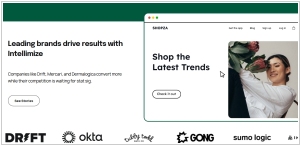Procurement software
Updated: December 03, 2023
Procurement software, also known as e-procurement software, is a specialized tool designed to streamline and automate the procurement process for businesses. It enables organizations to efficiently manage purchasing activities, supplier relationships, and procurement workflows. Procurement software typically includes features such as vendor management, electronic purchase requisitions, purchase order generation, invoice processing, and contract management. By digitizing and centralizing procurement processes, the software enhances visibility, improves efficiency, and reduces manual errors. It also provides real-time data and analytics, allowing organizations to make data-driven decisions and optimize their procurement strategies. Procurement software is a valuable asset for modern businesses seeking to streamline their procurement operations, control costs, and achieve greater compliance and transparency in their purchasing processes.
Procurement software is a set of solutions that help to automate the purchasing work of companies.
See also: Top 10 Online ERP software
See also: Top 10 Online ERP software
2023. Candex lands $45M to grow its procurement management business
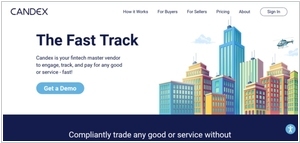
Candex, a startup dedicated to simplifying procurement processes, particularly in the realms of vendor management and payment procedures for businesses, has successfully secured $45 million in its Series B funding round. The platform developed by Candex is intricately designed to seamlessly integrate with third-party procurement and enterprise resource management software. This innovative platform facilitates businesses in expediting vendor payments from weeks to mere minutes, addressing and mitigating the administrative and operational complexities associated with vendor engagement and payment. By enhancing data management and providing insights into expenditure, Candex significantly accelerates workflows. Notably, the utilization of AI models plays a pivotal role in verifying invoice accuracy and ensuring appropriate taxation for transactions in the countries where a business operates, as highlighted by Lappin, a representative of the company.
2023. Procurement management software startup Oro Labs lands $34M investment
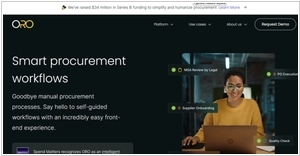
Oro Labs, a platform specifically crafted for streamlining procurement and supplier management processes across diverse systems and data sources, has secured $34 million in Series B funding. Oro's solution encompasses a collection of no-code tools enabling the implementation of various workflows, including tasks like invoicing, supplier onboarding, and risk management. These tools come with pre-designed templates that standardize decision-making steps in procurement and feature dashboards that consolidate data from different procurement-related systems and applications into a unified interface. The platform's no-code engine, tailored for procurement, simplifies the delegation of management responsibilities among process owners, contributors, and IT professionals. Additionally, Oro stands out for its seamless integration capabilities with existing tools. IT teams can effortlessly expand Oro workflows using existing integration recipes or creating new ones, making the platform highly adaptable and user-friendly.
2023. Procurement management platform Levelpath raises $30M
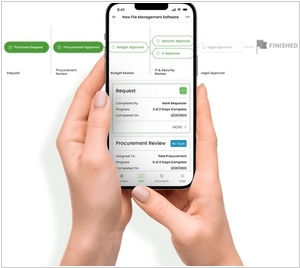
Levelpath, a software-as-a-service platform dedicated to overseeing diverse enterprise procurement services, has successfully secured $30 million in funding. In an industry where enterprises grapple with procurement challenges, numerous startups are vying for a significant share of the procurement software market, valued at $6.15 billion in 2021 by Fortune Business Insights. Among the key players, Zip, having recently raised $100 million at a $1.5 billion valuation, stands out, alongside Fintech startup Ramp, which recently entered the procurement arena. Additionally, there are smaller, more specialized vendors like Focal Point, Keelvar, and Tropic. What distinguishes Levelpath is its mobile-first interface, described as "next-gen" and "easy-to-use." While suitable for smaller firms, Levelpath is specifically designed for enterprises managing extensive vendor and employee networks, providing tailored tools for each company's unique approval workflows.
2023. Procurement platform Zip raises $100M at a $1.5 billion valuation
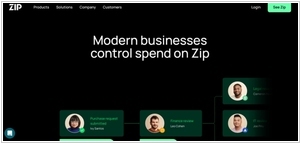
The procurement industry, focused on platforms for purchasing goods and services, continues to thrive. Zip, a startup specializing in procurement software, has recently announced the successful completion of its Series C funding round, raising $100 million. Zip's solution, known as an "intake-to-procure" system, enables employees to initiate purchases that are then routed for approval across various teams including finance, legal, IT, security, and more, before being integrated into enterprise resource management software. A newly introduced feature called "intake-to-pay" expands the capabilities of Zip's solution, facilitating tasks such as issuing purchase orders, processing invoices, and managing payments. Moving forward, Zip has plans to incorporate new AI-based functionalities into its platform, aiming to further streamline the entire intake-to-pay process. By leveraging artificial intelligence, the goal is to enhance the efficiency and effectiveness of procurement operations.
2022. Egypt’s Suplyd raises $1.6M to digitize restaurants supply chain
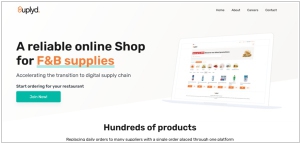
Suplyd, a procurement platform designed for hotels, restaurants, and catering (HoReCa) businesses in Egypt, has successfully raised $1.6 million in pre-seed funding. Suplyd's innovative B2B platform revolutionizes supply chain operations in the food service industry by facilitating digital order procurement, payment, and fulfillment processes. With Suplyd, restaurants gain access to a wide range of products on-demand, eliminating the time-consuming task of sourcing goods offline. The platform not only saves businesses valuable man-hours but also ensures competitive pricing for the acquired goods, optimizing cost efficiency within the industry.
2022. Supplier management startup Stimulus closes $2.5M seed round
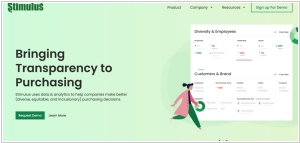
SaaS startup Stimulus has announced the successful completion of an oversubscribed $2.5 million seed funding round. Founded by Tiffanie Stanard in 2017, the company initially focused on revolutionizing the supply chain industry. Stimulus developed a product that equips establishments with the necessary tools and data to select, compare, and establish partnerships with product suppliers and vendors. The outcome is a comprehensive solution that helps businesses reduce costs by avoiding incompatible suppliers while also introducing diverse vendors to companies that may have overlooked them in the past. With Stimulus, users can discover suppliers using various search criteria, such as industry, company size, location, product, and certification. The platform enables the evaluation of current or potential suppliers who meet the specific criteria required by your organization. Additionally, Stimulus provides a centralized platform to manage supplier relationships, including project status, budget, and supplier status, streamlining the entire process in one place.
2022. Focal Point focuses on modernizing procurement with $3M
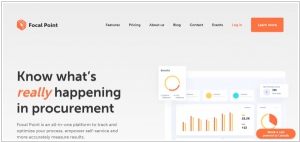
Focal Point, a service revolutionizing the manual procurement process through automation, has successfully secured $3M in seed funding. With its advanced capabilities, Focal Point enables users to identify suppliers who fulfill specific requirements, encompassing technical expertise, environmental standards, diversity, and more. Users have the flexibility to create customized workflows, while Focal Point assists in presenting a curated list of suppliers, managing the issuance of RFPs, facilitating the evaluation process, and ultimately awarding contracts. Procurement officers can efficiently monitor these activities across their organization using analytics, providing insights into the progress of various purchasing stages and expenditure details.
2022. Keelvar raises $24M to automate procurement in the supply chain
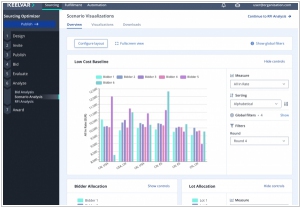
Supply chain technology companies have gained significant prominence amidst ongoing shortages, offering solutions to a persistent problem. One of these notable vendors is Keelvar, based in Cork, Ireland, which provides a supply chain analytics platform. Keelvar assists customers in making informed decisions for their supply chains by evaluating various sourcing scenarios. The platform enables customers to gather and analyze a wide range of procurement bid information from both direct and indirect suppliers. Based on specific criteria and constraints, Keelvar facilitates the examination of multiple awarding scenarios. (Direct procurement refers to spending on goods and services directly contributing to tangible profit, while indirect procurement encompasses expenditure on goods and services necessary for day-to-day operations.) Additionally, the platform allows customers to initiate and manage bidding events efficiently. Keelvar's algorithms effectively analyze data related to supply chain disruptions and vendors, ensuring the extraction of valuable information while offering recommendations.
2021. Accounts payable automation startup Tipalti raises $270M
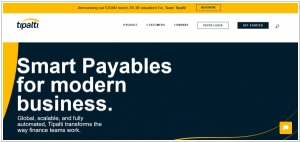
Tipalti, a company specializing in automating accounts payable processes for mid-market companies, has successfully raised $270 million in a Series F funding round. Utilizing the power of artificial intelligence, Tipalti offers a comprehensive cloud-based platform that streamlines various accounting services, including supplier management, invoice processing, purchase orders, tax compliance, payment processing, and billing. By leveraging its advanced AI technology, Tipalti claims to significantly reduce the operational workload for businesses, allowing them to promptly pay their partners and vendors within minutes. With Tipalti, companies can benefit from an integrated solution that enhances efficiency and optimizes their accounts payable processes.
2020. Fairmarkit lands $30M Series B to modernize procurement
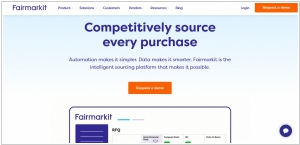
Fairmarkit, a startup focused on revolutionizing enterprise procurement, has successfully secured $30 million in Series B funding. The company aims to disrupt the traditional procurement software systems provided by industry giants like Oracle and SAP. These systems primarily track significant purchases exceeding $500,000 or $1 million, leaving smaller transactions referred to as tail spend. Fairmarkit acts as a platform where vendors can connect with customers, offering a centralized buying system for goods and services priced below $1 million. By integrating a customer's vendor data with additional information, Fairmarkit compiles an extensive database of purchasing details. Leveraging artificial intelligence (AI), the platform identifies customer requirements and optimizes pricing for specific orders. With a growing customer base spanning diverse industries, Fairmarkit currently serves over 50 clients.
2019. Workday to acquire online procurement platform Scout RFP for $540M
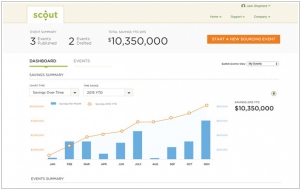
Workday has recently finalized an agreement to acquire Scout RFP, an esteemed online procurement platform, for a significant sum of $540 million. This strategic acquisition serves as a valuable expansion to Workday's existing procurement solutions, namely Workday Procurement and Workday Inventory. Workday is dedicated to becoming a comprehensive, all-encompassing player in the cloud back-office arena, and addressing the gap in procurement has been one of their major priorities. As part of their broader vision for the future of Cloud ERP, Workday strategically invests in portfolio companies that complement their core offerings. In today's definition of ERP, various essential components such as finance, HCM (human capital management), projects, procurement, supply chain, and asset management are included, and Workday is committed to delivering a holistic solution covering these key areas.

